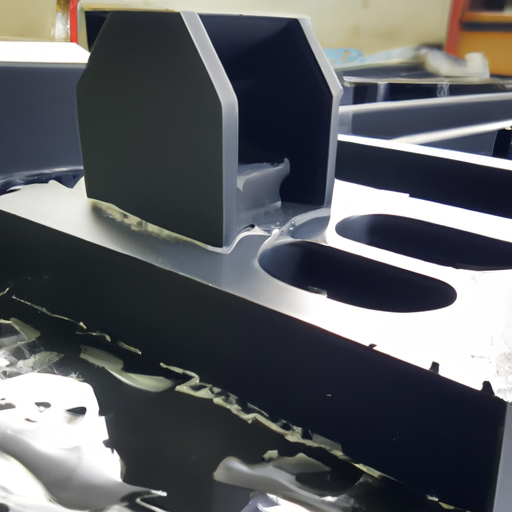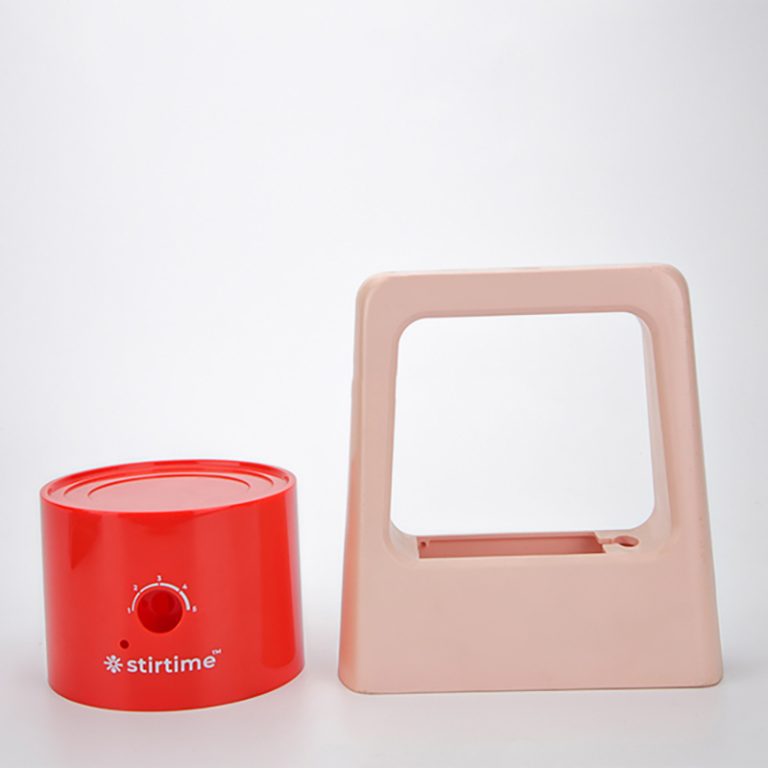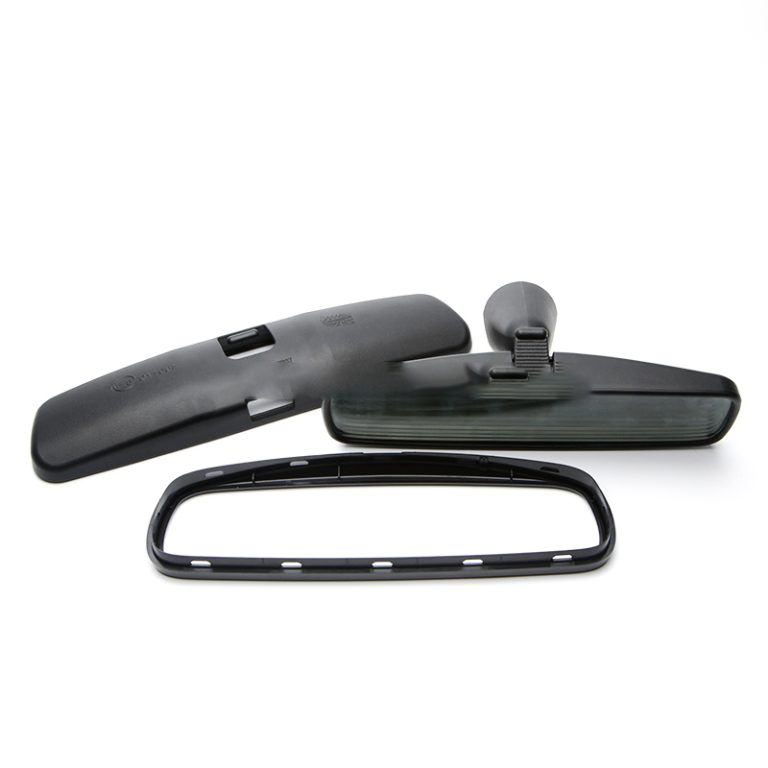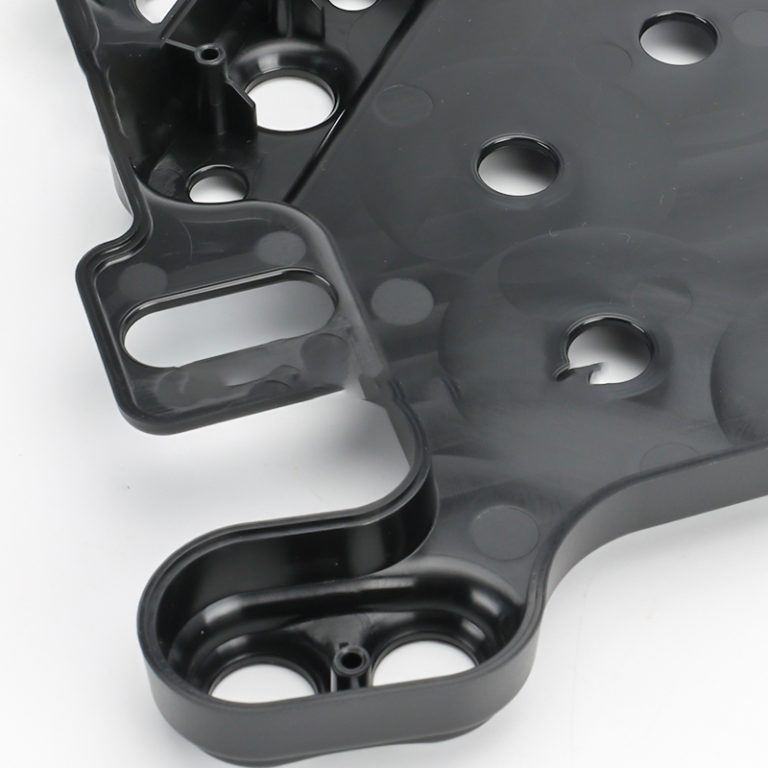De basisprincipes van het spuitgieten van kunststof spuitgietmatrijzen

Materiaalkeuze
| grootte | ABS/PET/PEEK/ETC. |
| maatwerk | De eerste stap in het spuitgietproces van kunststof matrijzen is het ontwerp en de creatie van de matrijs. Hierbij wordt gebruik gemaakt van computerondersteunde ontwerpsoftware (CAD) om een 3D-model van het gewenste product te maken. De mal wordt vervolgens machinaal bewerkt of 3D-geprint met behulp van het CAD-model als richtlijn. De mal is doorgaans gemaakt van staal of aluminium, omdat deze materialen bestand zijn tegen de hoge temperaturen en drukken die gepaard gaan met het spuitgietproces.
Zodra de mal klaar is, is de volgende stap de voorbereiding van het plastic materiaal. Meestal worden thermoplasten gebruikt bij het spuitgieten vanwege hun vermogen om te worden gesmolten en opnieuw gesmolten zonder enige significante chemische verandering te ondergaan. Het plastic materiaal heeft doorgaans de vorm van kleine pellets of korrels, die in een trechter worden gevoerd en vervolgens in een plastic spuitgietmachine tot gesmolten toestand worden verwarmd. |
De spuitgietmachine bestaat uit een cilinder, een schroef en een matrijsklemeenheid. Het plastic materiaal wordt in het vat gevoerd, waar het wordt verwarmd en gemengd door de roterende schroef. Het gesmolten plastic wordt vervolgens onder hoge druk in de matrijsholte gespoten, waardoor de gehele holte wordt opgevuld en de vorm van de matrijs wordt aangenomen. De matrijs wordt gesloten gehouden door de klemeenheid om ervoor te zorgen dat het kunststofmateriaal tijdens het injectieproces niet naar buiten lekt.
Zodra de matrijsholte is gevuld, kan het kunststofmateriaal afkoelen en stollen in de matrijs. Dit staat bekend als de afkoelfase en duurt doorgaans enkele seconden tot enkele minuten, afhankelijk van de grootte en complexiteit van het product. Koelen is een cruciale stap in het proces, omdat het de uiteindelijke vorm en kwaliteit van het gegoten onderdeel bepaalt. Een goede koeling zorgt ervoor dat het onderdeel niet kromtrekt of vervormt en dat het de gewenste maatnauwkeurigheid heeft.
Na de afkoelfase wordt de matrijs geopend en wordt het vormdeel uit de matrijsholte geworpen. Dit gebeurt handmatig of met behulp van een geautomatiseerd uitwerpsysteem, afhankelijk van de grootte en complexiteit van het onderdeel. De matrijs wordt vervolgens weer gesloten en het proces wordt herhaald om meer onderdelen te produceren.
Het gieten van kunststof spuitgietmatrijzen biedt verschillende voordelen ten opzichte van andere productieprocessen. Het maakt de productie van complexe vormen met hoge precisie en herhaalbaarheid mogelijk. Het maakt ook het gebruik van een breed scala aan kunststofmaterialen mogelijk, waardoor fabrikanten de flexibiliteit hebben om het meest geschikte materiaal voor hun specifieke toepassing te kiezen. Bovendien is spuitgieten een zeer efficiënt proces, met minimaal materiaalafval en snelle productiecycli.
Samenvattend is het gieten van kunststof spuitgietmatrijzen een fundamenteel proces in de productie-industrie. Het omvat het ontwerp en de creatie van een mal, de voorbereiding van het plastic materiaal en het injecteren van het gesmolten plastic in de malholte. De koel- en uitwerpfase voltooien het proces, wat resulteert in een afgewerkt vormdeel. Het begrijpen van de basisprincipes van het gieten van kunststof spuitgietmatrijzen is van cruciaal belang voor iedereen die betrokken is bij de productie van kunststofproducten, omdat het een efficiënte en hoogwaardige productie mogelijk maakt.

The injection molding machine consists of a barrel, a screw, and a mold clamping unit. The plastic material is fed into the barrel, where it is heated and mixed by the rotating screw. The molten plastic is then injected into the mold cavity under high pressure, filling up the entire cavity and taking the shape of the mold. The mold is held closed by the clamping unit to ensure that the plastic material does not leak out during the injection process.
Once the mold cavity is filled, the plastic material is allowed to cool and solidify inside the mold. This is known as the cooling phase and typically takes a few seconds to a few minutes, depending on the size and complexity of the product. Cooling is a critical step in the process, as it determines the final shape and quality of the molded part. Proper cooling ensures that the part does not warp or deform and that it has the desired dimensional accuracy.
After the cooling phase, the mold is opened, and the molded part is ejected from the mold cavity. This is done either manually or using an automated ejection system, depending on the size and complexity of the part. The mold is then closed again, and the process is repeated to produce more parts.
Molding injection plastic mold offers several advantages over other manufacturing processes. It allows for the production of complex shapes with high precision and repeatability. It also enables the use of a wide range of plastic materials, giving manufacturers the flexibility to choose the most suitable material for their specific application. Additionally, injection molding is a highly efficient process, with minimal material waste and fast production cycles.
In conclusion, molding injection plastic mold is a fundamental process in the manufacturing industry. It involves the design and creation of a mold, the preparation of the plastic material, and the injection of the molten plastic into the mold cavity. The cooling and ejection phases complete the process, resulting in a finished molded part. Understanding the basics of molding injection plastic mold is crucial for anyone involved in the production of plastic products, as it allows for efficient and high-quality manufacturing.





